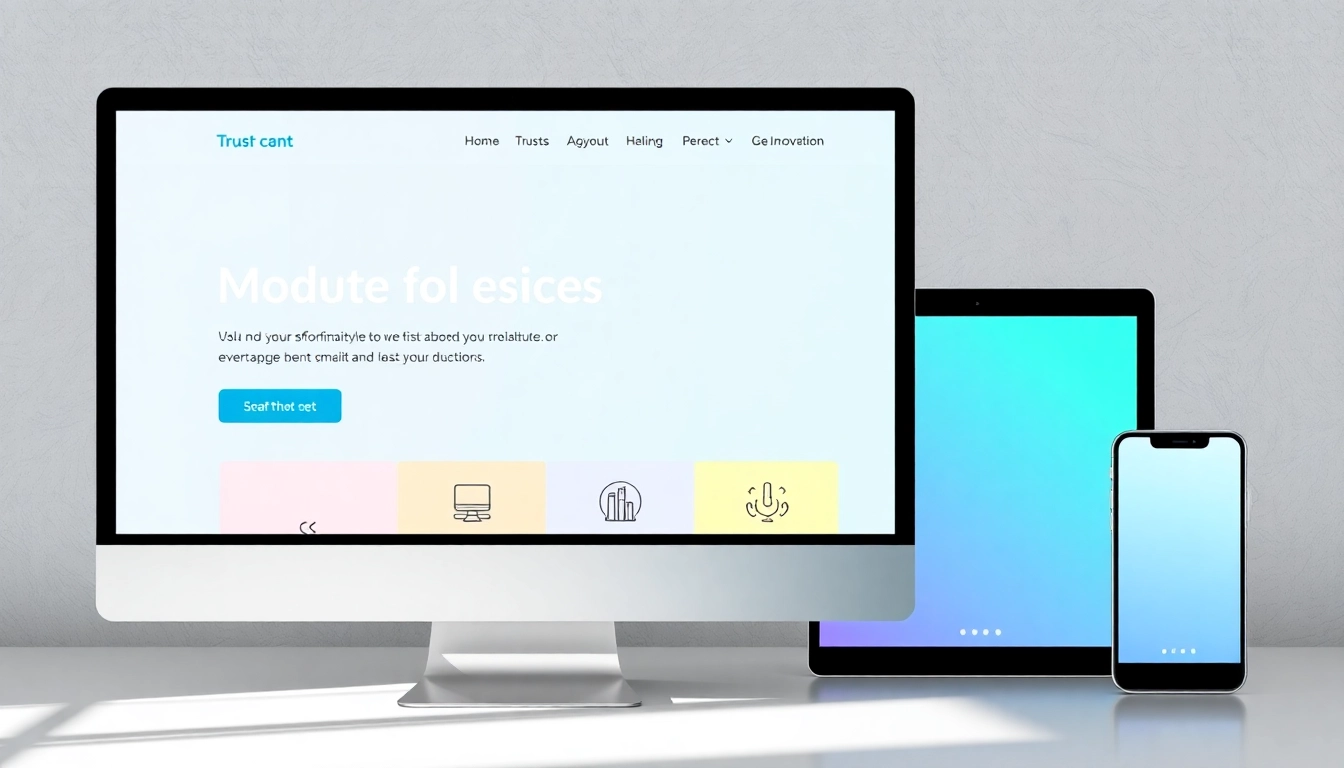Understanding the Benefits of Affordable Web Pages for Small Businesses
In today’s digital landscape, establishing a robust online presence is critical for small businesses and entrepreneurs. However, many are deterred by the perceived high costs associated with website development. Fortunately, affordable web pages, often termed paginas web baratas, present an accessible solution that combines quality with cost-effectiveness. These budget-friendly websites enable small enterprises to compete effectively in the digital arena, reaching targeted audiences without exhausting their resources. This article delves into the core advantages of affordable web pages, exploring how they strike a balance between quality and affordability, and highlighting their impact on growth and sales.
Key Features of Cheap Web Pages that Enhance Performance
Responsive Design Across All Devices
One defining feature of effective low-cost websites is responsive design. Modern users access websites via desktops, tablets, and smartphones—often multiple devices within a single browsing session. Affordable web solutions prioritize creating responsive layouts, ensuring that your site adapts seamlessly across all screen sizes. This enhances user experience by providing easy navigation, clear visuals, and fast loading times regardless of device, which significantly reduces bounce rates and encourages conversions.
SEO Optimization for Improved Rankings
Search engine optimization (SEO) is fundamental for increasing visibility and attracting organic traffic. Affordable web developers incorporate essential SEO strategies—such as keyword integration, fast loading speed, optimized images, and relevant meta tags—right from the outset. Proper SEO enhances your site’s ranking on Google and other search engines, making it easier for potential customers to find your business. Even with a limited budget, strategic SEO implementation can yield substantial long-term benefits.
Compelling and Relevant Content Strategies
Content remains king in digital marketing. Budget web pages focus on creating compelling, relevant content that accurately reflects your offerings and engages visitors. Clear calls-to-action, keyword-rich descriptions, and value-driven information not only improve SEO but also foster trust and authority. Consistent, high-quality content encourages visitors to stay longer on your site, increasing the likelihood of converting leads into customers.
Step-by-Step Guide to Developing a Cheap Web Page
Selecting the Right Platform and Hosting Services
The foundation of an affordable website is choosing a reliable platform and hosting provider. Options like WordPress, Wix, and Weebly offer low-cost templates and easy-to-use interfaces suitable for beginners and small budgets. When selecting hosting, prioritize providers that offer excellent uptime, security, and support at affordable prices. For instance, companies like IONOS and Hostinger provide plans starting at just a few dollars per month, ensuring your website remains accessible and secure without overspending.
Design with User Experience (UX) in Mind
Even on a tight budget, a website should prioritize a clean, intuitive design. Use simple navigation menus, clear visual hierarchies, and minimalistic layouts that highlight your key messages. Employ free or inexpensive templates that are mobile-responsive and aesthetically pleasing. Effective UX design ensures visitors can easily find information and navigate through your offerings, leading to higher engagement and conversions.
Implementing SEO and Content Best Practices
To maximize visibility, integrate fundamental SEO techniques into your website’s structure and content. Use relevant keywords naturally within your text, optimize images with descriptive alt tags, and create engaging meta descriptions. Additionally, composing original content tailored to your target audience—such as blogs, FAQs, and product descriptions—will strengthen your site’s authority and relevance. Regularly updating content and analyzing performance metrics further refine your strategy, boosting your search engine rankings over time.
Overcoming Challenges in Budget Web Development
Balancing Quality and Cost
One common challenge is maintaining quality standards within limited budgets. To address this, prioritize essential features like mobile responsiveness, SEO, and security. Use reputable templates and platforms that provide professional-looking designs without extra costs. Investing in basic yet reliable hosting services and leveraging free tools for analytics and SEO ensures your site functions effectively without overspending.
Avoiding Pitfalls of Cheap Web Solutions
Cheap websites can sometimes suffer from slow load times, poor security, or limited scalability. To mitigate these issues, choose providers with good reviews and proven performance records. Avoid heavily template-based designs that look generic and opt for customized solutions whenever possible. Regular maintenance, updates, and security checks are vital to keep your website safe and efficient as your business grows.
Ensuring Scalability for Future Growth
While initial costs are crucial, planning for future expansion is equally important. Use flexible platforms that allow easy addition of new features, pages, or ecommerce functionalities. This approach prevents unnecessary redevelopment costs down the line and ensures your website evolves with your business needs.
Measuring Success and Enhancing Your Budget Website
Tracking Performance Metrics Effectively
Utilize free tools like Google Analytics and Google Search Console to monitor website traffic, user behavior, and conversion rates. Analyzing these metrics provides insights into what is working and what needs improvement. Regular performance reviews enable data-driven decisions that enhance user engagement and ROI.
Adapting Content and Design for Better Results
Based on analytics, refine your content strategies—update keywords, improve call-to-action statements, and enhance visual elements. A/B testing different layouts or messaging can reveal optimal approaches to increase conversions and user satisfaction.
Leveraging Ongoing SEO and Marketing Strategies
Continual SEO optimization, social media engagement, and email marketing complement your website efforts. Building a content calendar with regular updates keeps your site fresh and competitive. These ongoing marketing efforts amplify your online visibility and attract more targeted visitors without significant additional costs.



